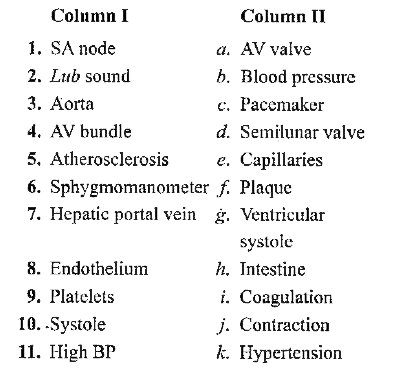(A)(Hydrated salt)Storngly−−−−→heatedB+Ctransparentglassy bead
H3BO3Strongly−−−−→heatedC+D
Find the number of tetrahedral and trigonal planar units in structure of A -
2,1
2,2
2,4
5,2
The correct Answer is:B
To solve the problem, we need to analyze the reactions and structures involved in the transformation of the hydrated salt (A) and the orthoboric acid (H₃BO₃). Let's break it down step by step.
Step 1: Identify the Compounds
- Compound A: The hydrated salt is identified as borax, which has the formula Na₂B₄O₇·10H₂O.
- Compound C: The product formed upon heating is B₂O₃ (boric anhydride).
- Compound B: The transparent glassy bead formed during the heating process.
Step 2: Write the Reaction for Orthoboric Acid
The reaction for orthoboric acid (H₃BO₃) upon strong heating can be written as:
H3BO3heat−−→B2O3+H2O
This shows that heating H₃BO₃ produces boric anhydride (B₂O₃) and water.
Step 3: Write the Reaction for Hydrated Salt (A)
The reaction for borax (A) upon strong heating can be written as:
Na2B4O7⋅10H2Oheat−−→B2O3+Na2B2O5+H2O
This indicates that borax decomposes to form boric anhydride (C) and a glassy bead (B).
Step 4: Analyze the Structure of Borax (A)
The structure of borax (Na₂B₄O₇·10H₂O) consists of:
- Trigonal Planar Units: These are formed by the boron atoms in the structure, which are coordinated to three oxygen atoms. In borax, there are 2 trigonal planar units.
- Tetrahedral Units: These are formed by the boron atoms that are coordinated to four oxygen atoms. In borax, there are also 2 tetrahedral units.
Step 5: Count the Units
From the structure of borax, we can conclude:
- Number of Trigonal Planar Units: 2
- Number of Tetrahedral Units: 2
Final Answer
Thus, the number of tetrahedral and trigonal planar units in the structure of A (borax) is:
- Trigonal Planar Units: 2
- Tetrahedral Units: 2
Summary
The final answer is:
- 2 trigonal planar units and 2 tetrahedral units.
---
- Compound A: The hydrated salt is identified as borax, which has the formula Na₂B₄O₇·10H₂O.
- Compound C: The product formed upon heating is B₂O₃ (boric anhydride).
- Compound B: The transparent glassy bead formed during the heating process.
The reaction for orthoboric acid (H₃BO₃) upon strong heating can be written as:
H3BO3heat−−→B2O3+H2O
This shows that heating H₃BO₃ produces boric anhydride (B₂O₃) and water.
The reaction for borax (A) upon strong heating can be written as:
Na2B4O7⋅10H2Oheat−−→B2O3+Na2B2O5+H2O
This indicates that borax decomposes to form boric anhydride (C) and a glassy bead (B).
The structure of borax (Na₂B₄O₇·10H₂O) consists of:
- Trigonal Planar Units: These are formed by the boron atoms in the structure, which are coordinated to three oxygen atoms. In borax, there are 2 trigonal planar units.
- Tetrahedral Units: These are formed by the boron atoms that are coordinated to four oxygen atoms. In borax, there are also 2 tetrahedral units.
From the structure of borax, we can conclude:
- Number of Trigonal Planar Units: 2
- Number of Tetrahedral Units: 2
Thus, the number of tetrahedral and trigonal planar units in the structure of A (borax) is:
- Trigonal Planar Units: 2
- Tetrahedral Units: 2
The final answer is:
- 2 trigonal planar units and 2 tetrahedral units.
Topper's Solved these Questions
- INORGANIC CHEMISTRYBook:ALLENChapter:INORGANIC CHEMISTRYExercise:s-BLOCK ELEMENTS
Explore 21 Videos
- INORGANIC CHEMISTRYBook:ALLENChapter:INORGANIC CHEMISTRYExercise:METALLURGY
Explore 22 Videos
- INORGANIC CHEMISTRYBook:ALLENChapter:INORGANIC CHEMISTRYExercise:COORDINATION COMPOUNDS & d-BLOCK COMPOUNDS (MATCH THE COLUMN)
Explore 2 Videos
- HYDROGENBook:ALLENChapter:HYDROGENExercise:EXERCISE-5
Explore 17 Videos
- Ionic EquilibriumBook:ALLENChapter:Ionic EquilibriumExercise:All Questions
Explore 37 Videos
Similar Questions
Which of the following order of L.E. is not correct :-
View SolutionIn order to refine "copper" it is melted in a furnace and it is stirred with green logs of wood. The purpose is :-
View SolutionMatch the following columns

View SolutionAssertion : Cu react with HCl & form H_(2) gas
Reason : Cu lies above the hydrogen in electro chemical series
View SolutionThe percentage degree of hydrolysis of a salt of weak acid (HA) and weak base (BOH) in its 0.1 M solution is found to be 10%. If the molarity of the solution is 0.05 M, the percentage hydrolysis of the salt should be :
View SolutionPh-underset(OH)underset(|)overset(Ph)overset(|)C-underset(OH)underset(|)overset(CH_(3))overset(|)C-CH_(3)+Ph-underset(OH)underset(|)overset(Ph)overset(|)C-underset(OH)underset(|)overset(Et)overset(|)C-Et overset(H_(2)SO_(4))to
View Solutionunderset(("Hydrated salt"))((A))underset("heated")overset("Strongly")rarr ubrace(B+C)_("Transparent glassy bead") H_(2)BO_(3) overset("Strongly")underset("heated")rarr C+D Identify C :
View Solution(A)(Hydrated salt)Strongly−−−−→heatedB+CTransparent glassy beadH2BO3Strongly−−−−→heatedC+D
Find the number of water of crystallization in (A):
View Solution(A)(Hydrated salt)Strongly−−−−→heatedB+CTransparent glassy beadH2BO3Strongly−−−−→heatedC+D
How many X−O−X linkages are present in structure of A(X= central atom)?
View Solutionunderset(("Hydrated salt"))((A))underset("heated")overset("Strongly")rarr ubrace(B+C)_("Transparent glassy bead") H_(2)BO_(3) overset("Strongly")underset("heated")rarr C+D Find the number of tetrahedral and trigonal planar units in structure of A:
View Solution(I) [Borax powder] Heated−−−−→strongly'A'+'B'Transparent glassy bead+H2O
(II) B+CuOΔ−−→'C' (Blue mass)
(III) A+'C'+C(coke)Δ−−→'D'+'E'+CO(↑⏐)
Compound 'C' may be:
View SolutionComplete the following chemical reactions
CH3−CH3∣C∣CH3−OHH2SO4−−−−−−→heat?Underset(Ozonolysis)O3−−→?H2/Ni−−−−−−→heat?
View SolutionComplete the following :
Mg(Air)−−−→heatcolourless solid[A]HCl−−→colourless solution[B]Na2CO3−−−−→white ppt[C]heat−−→colourless gas[D]Ca(OH)2−−−−−→white ppt[E]
View SolutionCH_(3)CH_(2)-underset(CH_(3))underset(|)overset(CH_(3))overset(|)(C)-underset(OH)underset(|)(C)H-CH_(3) underset(heat)overset(H_(2)SO_(4))tounderset("Major")P What is the major product P in the above reactions?
View SolutionNa2B4O7740∘C−−−−−→Δ2NaBO2+B2O2X + YTransparent
Z+CuO(s)→Cu(BO2)2Blue Bead
The Z will be
View SolutionFor writing the following structure, the no,-1 is given to which end? underset(7)overset(1)(C H_(3)) - underset(6)overset(2)(CH_(2))- underset(underset(underset(underset(CH_(3))(|))(CH_(2)))(5|))overset(2)(CH)- underset(underset(CH_(3))(4|))overset(overset(CH_(3))(4|))(C )- underset(3)overset(5)(CH_(2))- underset(2)overset(6)(CH_(2))- underset(1)overset(7)(C H_(3))
View Solution
